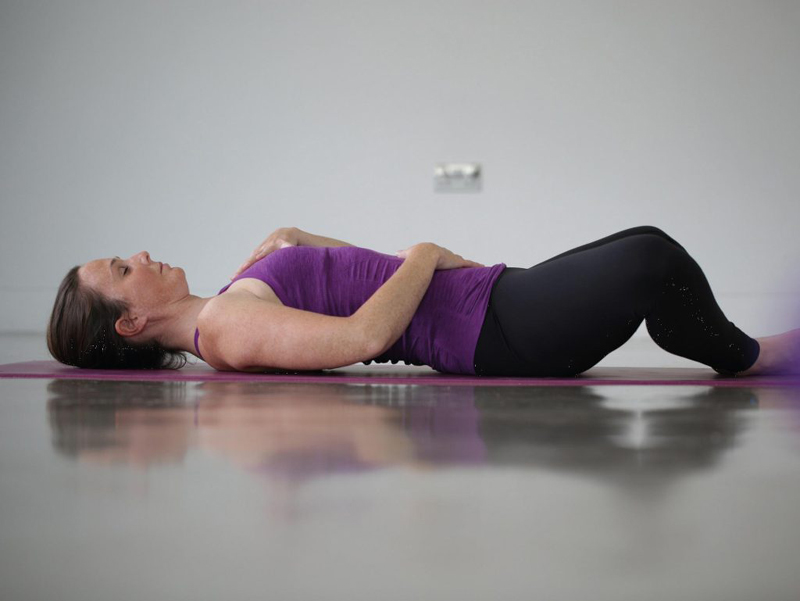![[feature] Breathe Your Way To Wellbeing](https://blogger.googleusercontent.com/img/a/AVvXsEjoHzP2I1PQ-sTJgoJklLao8ZCrzYK8yP6km4ZmJiZDIuONf8K2M5g68C685Cmp9ge4JCpTbmZqgcWbO6OHxmbPgSQK2khJx7bfK_7QE3PTkTtOju--qOvL4F7VtSFZ9JtJUF6Bi-SjkorcZI3ttkOy__qWbhiOO1D1q5bzVO_Ktcq19f2du5gWM_Jq=s16000) |
| © Provided by Natural Health |
We breathe on average 25,000 breaths per day without giving it a second thought, but according to yoga and breathwork teacher Felicity Wood, paying attention to the way we breathe could just be the key to our wellbeing. “Our breath provides our body with oxygen,” says Felicity, “and if we are not breathing properly, the oxygen uptake in the blood and delivery of oxygen throughout the body can be compromised, which can impact not only on our energy levels, concentration, mood and ability to manage stress, but the functioning of all of our bodily systems.”
Breathing practices boast a whole host of wellbeing benefits from improving our mental wellbeing, aiding digestion and reducing anxiety and depression to reducing inflammation, improving blood circulation, and regulating blood pressure, as well as lowering pain and fatigue, improving our concentration and mood and helping us sleep better. The list goes on… “Once healthy breathing patterns are established, it’s worthwhile making breathwork a daily habit and just five minutes of practice per day can make a difference,” adds Felicity. Interested? Felicity shares three of her favourite breathwork exercises to get you started.
Breath awareness practice
 |
| © Provided by Natural Health |
This practice simply focuses the mind on our breath, ensuring that we are breathing functionally. By taking regular pauses in the day for breath awareness, we can consciously slow down our breathing, ensuring that we are using the diaphragm properly.
1. Close your eyes and start by bringing your awareness to how you are breathing.
2. Notice if you are breathing through your mouth, and if so, close it and breathe through the nose instead.
3. Notice where you feel your breath. Is it in the upper chest, or lower down? Notice the speed of the inhalation and the exhalation. Is the breath fast or slow? Is it irregular and bumpy, or even and smooth?
4. Take some slower breaths, and as you do this, direct your breath down to your lower lungs. On the inhalation feel the lower ribs move outwards and allow the belly to gently rise, and on the exhalation feel the lower ribs move inwards and allow the belly to gently fall. Avoid taking in big gulps of air.
Rather than thinking ‘deep’ breaths, think light, smooth, slow breaths where you are gently lengthening the inhalation and the exhalation effortlessly.
Breath awareness practices can be done anywhere and at any time, whilst sitting at a desk, watching the TV, or cooking dinner. Regular pauses throughout the day are ideal. Not only is this beneficial for the systems of the body, but it is also an effective way to calm the mind and boost concentration.
Read More: How to Apply Bronzer For a Natural Glow
Coherent breathing practice
 |
| © Provided by Natural Health |
This practice allows our heart, lungs and circulation to work coherently and at maximum efficiency. This practice can be beneficial for increasing blood circulation and balancing blood pressure and the autonomic nervous system. The brain is focused and yet relaxed as we concentrate on the length of the breath and so this practice is an effective way to calm and focus the mind, as the rhythm can take us into a state of meditation.
1. You can be sitting or lying down on your back or on your front. You might like to place your hands on your lower ribs or belly so that you can feel the diaphragmatic movement as you breathe.
2. Breathing in through the nose for six seconds, and out for six seconds so that you are slowing down the rate of your breathing to five breaths per minute.
3. As you breathe in, the lower ribs move outwards and you allow the belly to gently rise, and on the exhalation the lower ribs move inwards, and you allow the belly to gently fall.
4. Rather than deep breaths, think light, smooth, even slow breaths like a wave.
5. Practise this daily for five to 20 minutes.
Breathing practice for anxiety
 |
| © Provided by Natural Health |
This breathing practice can help to alleviate anxiety by giving the mind the count of the breath to focus on, rather than it being occupied with anxious thoughts. This breathing technique includes breathholding. Please note that breath holding isn’t suitable if you are pregnant, and it also may be contraindicated if you are recovering from COVID-19 or if you have other respiratory or heart conditions.
1. Breathing through your nose, breathe in for four seconds, pause for four seconds, breathe out for six seconds and then pause for two seconds.
2. In your head you can count this as follows: In two-three-four, pause two-threefour, out two-three-four-five-six, pause two.
3. Repeat for six or more rounds and notice how this affects any feelings of anxiety or panic.
See more at Natural Health





















